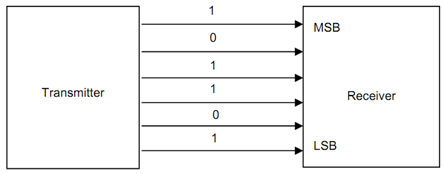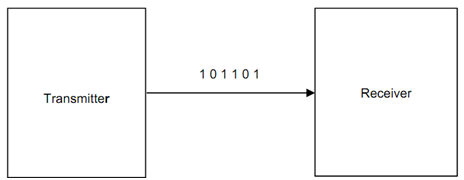Serial and Parallel Communication
If you notice at the back of the CPU of a personal computer, you may notice a number of input/output ports that are used for interfacing with things such as printer, scanner, digitizer, etc. Depending upon the requirements, these ports uses two types of data transmission between the connected devices.
- Parallel communication, and
- Serial communication.
As the name implies, the parallel communication involves the movement of information between the two devices in parallel using a large number of individual wires as shown in Figure 1(a). Parallel interfaces are used for high rate of data flow than is possible with serial data transmission. In the case of parallel communication, the number of wires connecting will be based on the number of data bits being sent in parallel, such as 8, 16 or 32 bits. As such there have to be different standards for each unlike the serial communication where there is a single accepted standard RS 232-C. In view of the multiple wires being used in parallel communication, the distances between the communicating equipment has to be small to reduce the cost of the cabling.

(a) Parallel Communication
In the case of serial communication, there is a single wire that sends data from one terminal to the other as shown in Figure 1(b). As a result, the data will move in single bits. However the data is normally stored in parallel in the computer or MCU in the form of words of length 8, 16 or 32 bits. Therefore the serial communication will have to convert that data into single bits, organize them and then send. At the receiving end, these bits will have to be reassembled to make the necessary word of 8, 16 or 32 bits.

(b) Serial Communication